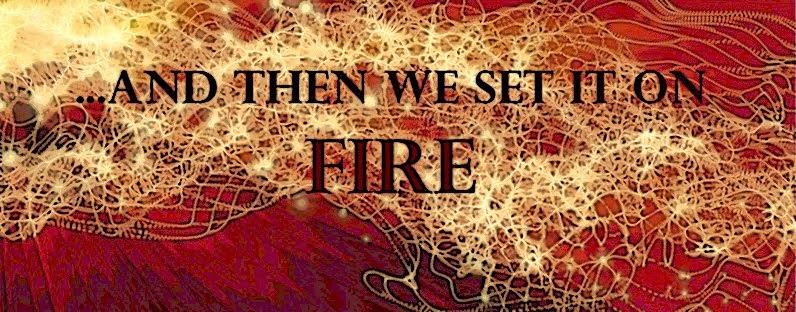Last Friday, you got a supplies list for what you’ll need to draw with your sewing machine. Most of the items on the list are easy to figure out but I want us to talk a little bit more about how to get you sewing machine setup for doing this.
I get a lot of questions about sewing machine setup, so I wanted to take care of them upfront. This will be a detailed post geared towards the beginner thread sketcher. If you already have experience in this, then it will be a refresher for you. Let’s get to it.
Your sewing machine is the most important component of your setup. First off, make sure it’s properly serviced. Clean the bottom of all lint and thread tails. Oil it if that’s what your manual says or take it in for servicing. It pays to take your sewing machine in for servicing when it’s due.
Sewing Machine: I use a straight stitch sewing machine although you can free motion stitch with a zigzag machine too. For our purposes, we’ll be using a straight stitch machine.
Sewing Table: If you can have your sewing machine flush with your sewing table, that will be best. However for small projects it doesn’t really make much of a difference if your sewing machine is on top of the table and not dropped down into the table.
Free Motion Presser Foot: You will need to switch to a free motion foot. That involves unscrewing your standard foot and screwing in a free motion foot. Alternatively if you have a Snap-on Shank Adapter, which newer machines have you just snap on the darning foot.
 |
| Free Motion Feet (Photo from tv-sewingcenter.com) |
Most machines come with one. If you don’t have one you can find a universal one which will fit your machine. Usually to buy a universal presser foot, you’ll need to know if your sewing machine has a high-shank or low shank or slant. Check your sewing machine manual for specifications.
Free motion presser feet come by different names - open- toe, C-toe, closed toe, O-toe, darning foot and hopping foot. So don’t get confused when you see these names. Get what fits your sewing machine. I use the open toe because it allows me to see where I’m going when I’m stitching.
Needle Plate: Needle plates are specific to the model of each sewing machine. They are the metal plates which cover your sewing machine’s bobbin case and feed dogs. You may either have a small round whole or a line. The plate with a round whole can only do straight stitching and the one with a line can do both straight and zigzag plus some decorative stitches. We’re keeping everything simple. No need to change plates.
 |
| Multiple/ZigZag Needle Plate and Single Needle Plate (Photo from GoldstarTool.com) |
Stitch Length and Stitch Width: Since you’re now the boss lady of your sewing machine, you don’t need your machine to determine your stitch length for you. Turn down both stitch length and width to zero. The length of you stitches will now be determined by the speed of your sewing machine and the speed at which you hands move your fabric.
Sewing Machine Speed: Some people recommend setting your sewing machine at the highest speed possible when doing free motion stitching. I set mine at a medium speed. I find that setting your speed at a level you can control is important.
If you haven’t done free motion stitching before, I want you to know that it takes a while to get a knack of the hand-eye coordination. So don’t get frustrated and give up too soon.
When free motion stitching, keep your eye on your destination, where you want to stitch next. Don’t focus on your hands. Just like when you’re driving you’ll keep your eyes on the road and not on the steering wheel.
It takes a little practice but you can do this.
Let me know if you’ve got any questions. I love the interaction so don’t be shy to ask questions. Those of you who’ve already got experience in doing this, please feel free to answer questions too and give your opinions and share what worked for you.
Now get your materials for making a quilt sandwich ready. The fun stuff starts on Wednesday. We’ll be making and using a quilt sandwich on Wednesday. See you soon.
Warmest Regards.
Clara.
ClaraNartey.com
ClaraNartey.com

Yes, your best advice is to have patience, it may not come instantly for you. But with practice, a little every day, you can do beautiful work. I am a living testament to that!
ReplyDeleteNow, after not haivng a machine or a house for 7 months because of the Louisiana floods, I am *this* close to having my sewing studio back. I a going to be a beginner again! LOL
Patience is the key here. I think a lot of people give up a little too soon. I'll use my personal example here.
DeleteWhen I started learning. I made a pile of quilt sandwiches ready. And then every morning I'll wake up and practice on one or two sandwiches.
I did that consistently for a few months until I could see that I had developed wonderful control over the sewing machine.
That's why I say everyone can do this if you really want to.
So if you're interested in learning I encourage you to commit to practicing.
When you say "dial;e" your feed dogs, do you mean to lower the feed dogs?
ReplyDeleteI apologize for the typo Suzanne ( I'll correct it). Yes I mean lower the feed dogs.
Delete